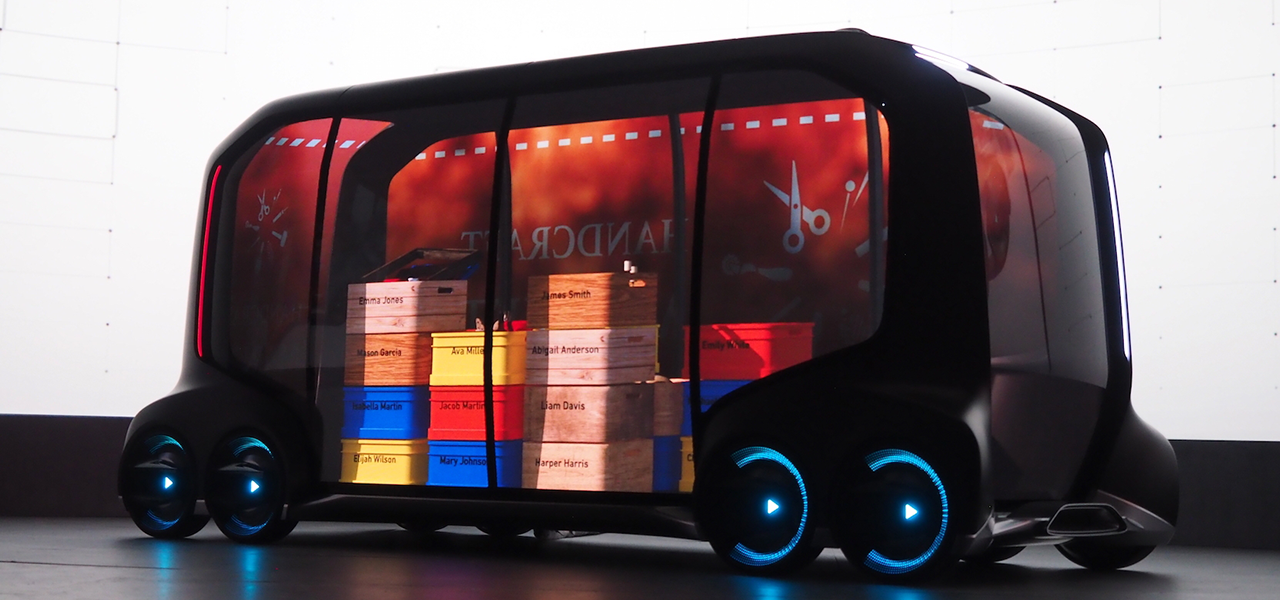
This year at CES, the huge technology trade show held annually mid-January in Las Vegas, in the little game of “big trends”, connected and autonomous mobile robots sure scored high. There was an entire area dedicated to them at the show, and more than a dozen automobile manufacturers were there presenting their projects.
Rather than being just straightforward vehicles, some of these projects are marketing themselves as “platforms”. It’s a semantic shift that has surprisingly lead us to talk more about delivering pizzas than transporting people. There’s more to this shift than meets the eye… In the city of tomorrow, autonomous mobility is not so much a matter of moving people about, but rather a bonanza for creating new services. Which is exactly what makes the designer Chenoe Hart exclaim that “driverless cars won’t be a new form of transportation but the end of it”. In her utopian vision of a city filled with “perpetual motion machines”, we’ll no longer travel to fixed destinations: urban travel would now be a connection of mobile zones.
“Driverless cars won’t be a new form of transportation but the end of it.”
And it’s in this line of “services vehicles” that Toyota has decided to make a strong impact, unveiling their autonomous concept vehicle, the e-Palette. A hub of “mobility services” for which the possibilities are currently… yet to be thought up. The product launch had some muscle, as they also announced an alliance of commercial partners. It’ll be up to these partners to standardize a whole suite of mobility solutions to support the e-Palette. The first names include Amazon, Uber and… Pizza Hut. In their video presentation, there’s no mention of calzones or margherita pizzas, instead, Toyota takes you on a dream showing a whole palette of experiences, from personalized, on-demand shopping (like a pop-up shoe shop), to a mobile workspace.
Pizza appears to have become the concrete face of this trend for changing consumer habits, and Ford is also getting in on the action. Presenting a concept self-driving service vehicle, their first partner is… Domino’s Pizza. As well as teaming up with the delivery service provider Postmates, Ford is also looking for other commercial partners before going into production in 2021. As for the other solutions presented at CES, they’re a little broader than fast food delivery: take the autonomous taxi from the French startup Navya; or the “Uber without drivers” launched with Nvidia; and even last mile logistics solutions such as the Robomart, an autonomous store on wheels, or Aida, the four-legged deliver robot that can carry up to 15kg of packages….
In the e-Palette’s on-demand city, we’re no longer simply passengers, we’re investing in spaces that “coexist and are in motion”. In this city, the way we traditionally categorize space is no longer relevant. Imagine it being just like in an Amazon factory: citizens no longer need a card to get around, all you need is a calendar and a list of potential activities and services available.
The effects remain to be seen, but will be more social than technological. However, for all these new vehicle concepts, we mustn’t forget all the accompanying infrastructure projects required. They might not necessarily have been “headliner” news at CES, but devices, such as the electric vehicle charging station proposed by the French startup Electric Loading, are essential. They’re a part of street furniture that is adapted to what civil engineers have called the City as a Service.
